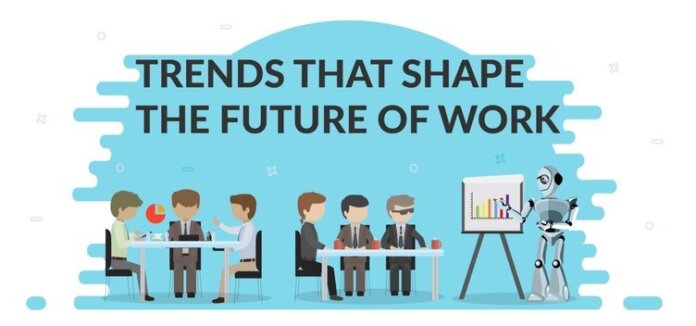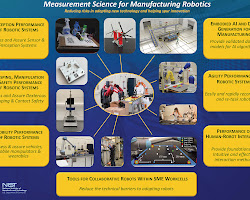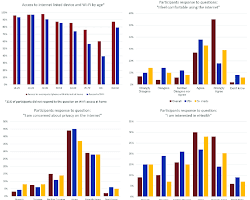In a rapidly evolving global landscape, the concept of work is undergoing a profound transformation. Technological advancements, shifting societal norms, and unprecedented challenges have given rise to new paradigms in how we work and interact with our professional environments. As we step into 2024 and beyond, it’s essential to explore the key trends that are shaping the future of work. This article delves into ten transformative trends that will redefine the way we approach work, collaboration, and productivity.
Table of Contents
1. Hybrid Work Environments
The traditional 9-to-5 office setup is giving way to a more flexible approach. Hybrid work models, where employees split their time between remote work and in-person collaboration, have gained prominence.
 Opens in a new window
Opens in a new window www.indeed.com
www.indeed.com
Data:
- According to a survey by PwC, 70% of employees would prefer a hybrid work model.
- A study by Upwork found that 36% of the U.S. workforce is now freelance or contract workers.
Benefits:
- Improved productivity: Employees who work from home tend to be more productive than those who work in an office.
- Increased flexibility: Hybrid work allows employees to have more control over their work-life balance.
- Reduced costs: Businesses can save money on office space and other overhead costs by adopting a hybrid work model.
Challenges:
- Maintaining team cohesion: It can be challenging to maintain team cohesion when employees are working remotely.
- Managing communication: It is important to have clear communication channels in place to ensure that everyone is on the same page.
- Ensuring security: Businesses need to take steps to ensure the security of their data and systems when employees are working remotely.
2.Emphasis on Remote Work Infrastructure
Remote work’s widespread adoption has accelerated the development of robust remote work infrastructure. Companies are investing in advanced technologies, secure communication tools, and cloud-based systems to ensure seamless collaboration regardless of physical location.
Data:
- The global market for remote work software is expected to reach $13.9 billion by 2025.
- A study by Cisco found that 82% of businesses plan to increase their investment in remote work technologies in the next year.
Benefits:
- Increased productivity: Remote workers tend to be more productive than those who work in an office.
- Reduced costs: Businesses can save money on office space and other overhead costs by adopting remote work.
- Improved employee satisfaction: Employees who work remotely tend to be more satisfied with their jobs.
Challenges:
- Security: It is important to have secure systems and processes in place to protect data and intellectual property when employees are working remotely.
- Culture: It can be challenging to create a strong company culture when employees are not working together in the same physical space.
- Management: It can be difficult to manage remote workers effectively.
3. Rise of Artificial Intelligence and Automation
Automation is reshaping job roles and tasks across industries. Artificial intelligence and machine learning are streamlining processes, enhancing decision-making, and reducing repetitive tasks.
Data:
- The global market for artificial intelligence is expected to reach $390 billion by 2025.
- A study by McKinsey found that up to 800 million jobs could be lost to automation by 2030.
Benefits:
- Increased productivity: Automation can free up employees to focus on more strategic tasks.
- Reduced costs: Automation can help businesses save money on labor costs.
- Improved accuracy: Automation can help businesses improve the accuracy of their processes.
Challenges:
- Job displacement: Automation could lead to job displacement for some workers.
- Training needs: Businesses will need to invest in training their employees on how to use automation technologies.
- Ethical concerns: There are ethical concerns about the use of artificial intelligence, such as the potential for bias and discrimination.
4. Focus on Employee Well-being
Companies are prioritizing employee well-being like never before. Mental health support, flexible schedules, and wellness programs are becoming integral to organizational culture. Recognizing that a healthier workforce is a more productive one, employers are taking proactive steps to ensure their employees’ overall well-being.
Data:
- A study by the World Health Organization found that depression and anxiety cost the global economy $1 trillion each year.
- A study by the Harvard Business Review found that companies with a strong focus on employee well-being have 30% lower turnover rates.
Benefits:
- Increased productivity: Employees who are well-being are more productive.
- Reduced absenteeism: Employees who are well-being are less likely to miss work.
- Improved morale: Employees who
5. Diverse and Inclusive Workforce
Diversity and inclusion are gaining traction as core values for organizations. Businesses are working towards building teams that reflect a range of backgrounds, perspectives, and experiences. Inclusive work environments foster creativity, innovation, and better problem-solving.
Data:
- A study by McKinsey found that companies in the top quartile for racial and ethnic diversity are 35% more likely to have financial returns above their respective national industry medians.
- A study by the Boston Consulting Group found that companies in the top quartile for gender diversity are 21% more likely to have above-average profitability.
Benefits:
- Increased creativity and innovation: Diverse teams are more likely to come up with new ideas and solutions.
- Improved problem-solving: Diverse teams are better able to understand and solve complex problems.
- Enhanced decision-making: Diverse teams are more likely to make better decisions.
- Increased employee satisfaction: Employees in diverse and inclusive workplaces are more satisfied with their jobs.
Challenges:
- Bias: There is still a lot of bias in the workplace, which can make it difficult to create a truly diverse and inclusive environment.
- Unconscious bias: People may not be aware of their own biases, which can make it difficult to create a truly inclusive environment.
- Microaggressions: Microaggressions are subtle, everyday forms of discrimination that can make people feel excluded.
6. Remote Team Building and Employee Engagement
With remote work becoming commonplace, fostering team cohesion and maintaining employee engagement is essential. Virtual team-building activities, online workshops, and digital platforms for social interaction are emerging to bridge the gap between remote colleagues.
Data:
- A study by Buffer found that 76% of remote workers feel disconnected from their team.
- A study by Owl Labs found that 67% of remote workers feel less engaged than they did when they worked in an office.
Benefits:
- Increased productivity: Engaged employees are more productive.
- Reduced turnover: Engaged employees are less likely to leave their jobs.
- Improved morale: Engaged employees are more satisfied with their jobs.
Challenges:
- Lack of face-to-face interaction: Remote workers miss out on the informal interactions that happen in an office, which can make it difficult to build relationships.
- Time zone differences: Remote workers may be in different time zones, which can make it difficult to collaborate.
- Technology challenges: Technical problems can make it difficult to stay connected and collaborate.
7. Gig Economy and Freelancing
The gig economy continues to expand, allowing professionals to pursue flexible work arrangements and multiple income streams. Freelancers and independent contractors are integral to various industries, enabling businesses to access specialized skills without permanent commitments.
Data:
- The global gig economy is expected to reach $455 billion by 2023.
- A study by Upwork found that 57% of the U.S. workforce is now freelance or contract workers.
Benefits:
- Flexibility: Gig workers have more flexibility in their work schedule and location.
- Independence: Gig workers have more independence and control over their work.
- Opportunity: Gig work can provide opportunities to learn new skills and experience new industries.
Challenges:
- Instability: Gig work can be unstable, with inconsistent income and benefits.
- Isolation: Gig workers can feel isolated from their colleagues and community.
- Lack of security: Gig workers may not have the same rights and protections as traditional employees.
8. Upskilling and Continuous Learning
As technologies evolve, the demand for new skills grows. Lifelong learning and upskilling are crucial to remain competitive in the job market. Organizations are investing in training programs and partnerships with educational institutions to ensure their workforce remains adaptable.
Data:
- A study by LinkedIn found that 92% of hiring managers believe that upskilling and reskilling are essential for career success.
- A study by McKinsey found that the average worker needs to learn 10 new skills every year to stay ahead of the curve.
Benefits:
- Increased job security: Upskilled workers are more likely to be employed and have higher salaries.
- Improved career prospects: Upskilled workers have more opportunities for advancement.
- Increased satisfaction: Upskilled workers are more satisfied with their jobs.
Challenges:
- Cost: Upskilling and reskilling can be expensive for organizations.
- Time: Upskilling and reskilling can take time, which can be difficult for busy employees.
- Access: Not everyone has access to the same opportunities for upskilling and reskilling.
9. Data-Driven Decision Making
Data analytics is guiding strategic decisions across organizations. From recruitment and talent management to performance evaluation, data-driven insights offer precise and informed solutions. Proficiency in data analysis is becoming a valuable skill for professionals at all levels.
Data:
- A study by McKinsey found that organizations that use data analytics are 23% more likely to achieve their business goals.
- A study by the Harvard Business Review found that data-driven companies are 50% more likely to have above-average profitability.
Benefits:
- Improved decision-making: Data-driven decisions are more likely to be accurate and effective.
- Increased efficiency: Data-driven insights can help organizations to optimize their processes and resources.
- Enhanced customer experience: Data-driven insights can help organizations to better understand and meet the needs of their customers.
Challenges:
- Data quality: The quality of the data is essential for accurate decision-making.
- Data bias: Data can be biased, which can lead to inaccurate decision-making.
- Data security: Data security is essential to protect sensitive information.
10. Remote Leadership and Management
Leadership and management styles are evolving to accommodate remote teams. Effective communication, trust-building, and setting clear expectations are pivotal for remote leaders. The ability to manage diverse teams across different time zones and cultures is becoming a hallmark of successful leadership.
Data:
- A study by Stanford University found that remote teams are just as productive as in-person teams.
- A study by the Harvard Business Review found that remote workers are more likely to be engaged and satisfied with their jobs.
Benefits:
- Increased flexibility: Remote leaders can have more flexibility in their work schedule and location.
- Improved communication: Remote leaders need to be more intentional about communication.
- Enhanced trust: Remote leaders need to build trust with their team members.
Challenges:
- Lack of face-to-face interaction: Remote leaders miss out on the informal interactions that happen in an office, which can make it difficult to build relationships.
- Time zone differences: Remote leaders may be in different time zones, which can make it difficult to collaborate.
- Technology challenges: Technical problems can make it difficult to stay connected and collaborate.
These are the 10 transformative trends that are shaping the future of work. By understanding these trends, we can prepare for the changes that are coming and ensure that we are well-positioned for success.
Additional things to consider about the future of work trends:
- The rise of artificial intelligence and automation will continue to change the nature of work. Some jobs will be lost to automation, but new jobs will also be created.
- The gig economy will continue to grow, as more people choose to work freelance or contract jobs.
- The workplace will become more diverse and inclusive, as businesses recognize the value of a diverse workforce.
- Upskilling and continuous learning will become increasingly important, as the demand for new skills grows.
- Data-driven decision-making will become more common, as organizations use data to make better decisions.
- Remote work will become more common, as businesses and employees embrace the flexibility and productivity benefits of remote work.
The future of work is uncertain, but it is clear that change is coming. By understanding the trends that are shaping the future of work, we can prepare for the changes that are coming and ensure that we are well-positioned for success.
“Embracing the opportunities that the future of work presents requires agility, open-mindedness, and proactive adaptation.”
Daoox
Tips for preparing for the future of work:
- Upskill and continuously learn new skills.
- Be open to change and be willing to adapt to new ways of working.
- Develop your soft skills, such as communication, collaboration, and problem-solving.
- Build your network and stay connected with people in your field.
- Be proactive and take charge of your career development.
The future of work is full of possibilities. By being prepared for change and taking action, we can seize the opportunities that the future has to offer.
Conclusion: Embracing the Future of Work Trends
The future of work is not a distant concept—it’s happening right now. The convergence of technology, societal shifts, and changing workplace dynamics is reshaping how we view and approach our careers. Adapting to these trends requires a commitment to continuous learning, flexibility, and a willingness to embrace change. As we navigate the trans-formative landscape of work in 2024 and beyond, those who are prepared to embrace these trends will not only survive but thrive in the new world of work. The key is to remain agile, open-minded, and proactive in embracing the opportunities that the future of work presents.
Read more articles
20 Fastest Growing Startups In 2024: Unveiling Innovation and Progress





















